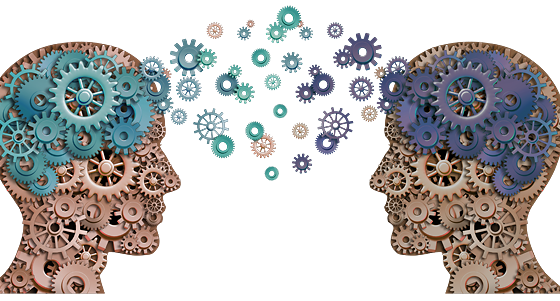...
How would you like to be a Guest Blogger for KMI? Email us at: info@kminstitute.org and let us know your topic(s)!
Knowledge Change is not a Technology Project
This article is referencing concepts and terminology common in “Knowledge Management” (“KM”) and “Adoption & Change Management” (“ACM”) and assumes that the reader has at least some experiences in one or the other. It also references the use of SW solutions and “collaboration tools” as a means to realizing organizational benefits, and value, of KM concepts.
I have inserted links to articles explaining some of the concepts where appropriate.

I have touched upon this topic in a few of my earlier posts, how we often mistake a Knowledge Management, or a Collaboration tool project, for being a technology project. I will go out on a limb here and be Boolean: It is not.
I am also intentionally calling it “Knowledge Change” as opposed to “Knowledge Management”, because when we try to implement a new KM process, solution or Collaboration tool, we are inevitably facing a Change Management effort. Not a “system implementation” effort or “adoption” effort. Perhaps in the rare exception, if an organization is already fully embracing KM principles, have defined and successfully implemented a knowledge-centric business model and managed to create and nurture a truly collaborative culture, they could possibly be doing a 1:1 replacement of one KM platform to another. I think anyone who’s been involved in any KM/Collaboration effort would agree with me when I say that is a close-to utopian scenario.
So, let’s focus on the large majority, rather than the rare exceptions.
Most of us work in organisations that truly wish to embrace a collaborative culture and leverage the collective knowledge of the organization to achieve more. Pretty much common sense in any knowledge worker organization, isn’t it? But it is a lot easier said than done as many of us also work in organisations that have a long(ish) history of engineering-driven, development-centric and traditional organisational structures. In this case I am thinking of organisations that quite typically are hierarchical and organized around geography and/or functions, rather than organized around capabilities or knowledge areas.
There are probably a fair number of barriers as well, in the shape of policies and processes, that prevents knowledge from flowing freely and effectively between those functions and/or geographies. And in some cases, there may even be barriers in-between levels within the hierarchies, in terms of roles and seniority.
Finally, the demographics of the work force will also likely, yet inadvertently, create additional barriers based off what kind of moral values and/or academic principles we were exposed to in our formative years. Someone born in the 50’s or 60’s for example may have a much higher focus on “perfecting before sharing” than someone born in the 80’s or 90’s. I believe that nationality/culture also plays a role in that area.
Does any of this sound familiar?
In those cases, implementing a new Knowledge Collaboration platform or Collaboration solution, is so much more complex than process change or a tools implementation project, because it immediately becomes a project to change culture and behaviours.
Here are a few things that are at the top of my mind, that I think you may find useful to consider.
- To change culture, you must change individual behavior
- To change behaviour, you must undo existing habits
- Undoing habits takes leadership, dedication and patience
I am making an assumption here that everyone has a good understanding of what we mean by [Organisational] Culture, are familiar with Peter Drucker’s statement that “Culture eats strategy for breakfast”[1] etc., so I will not delve into defining “culture”.
A second assumption I am making is that most of you are familiar with Adoption and Change Management fundamentals and know Prosci’s ADKAR or Kotter’s 8-step Change Model, so I will not go into those but skip right into the more challenging parts associated with those: Sponsorship, leadership and perseverance.
Culture is more than Vision, Mission and Values
So it takes more than a few strategy sessions, or management consultants to change it. Culture is the collective values, actions and behaviours of the company employees, so if we want to change it, we need to change the mind-sets and behaviours of everyone who works there. From top to bottom. Having active and visible (Executive) sponsorship is fundamental but it is not enough. We must avoid falling into the trap that so many of us have fallen into and forget about the middle management layers. They are crucial to drive any sustainable change because they are the people who manages the majority of the work force and if they do not ask for the change, it will most likely not happen. It matters a lot less what my CEO says, in practice, than what my direct manager and perhaps his/her manager says, doesn’t it? “Middle management” is the key change agent that can make the difference between failure and success.
Acquiring new habits would be a lot easier if we did not have to get rid of existing ones
Just think about your last New Year’s resolution – how many days did you last on that diet, or going to that gym 3 days a week, once you got passed Jan 1st? All of us have habits. Good ones and bad ones and they are all hard to change but most difficult to change are the bad ones. Then add to that the dimension of having previously been rewarded for one type of behaviour (“the bad habit”), now being asked to do something different (“the good habit”). It will be hard for everyone and it will be even harder for people with tenure. Therefore, rewards and recognition are key, but they are not a silver bullet.
Patience is a virtue that very few of us possess
Learning anything new takes patience and practice for most of us, as well as perseverance. But it does become a little bit easier if the people we look up to and respect are leading by example, or if there is a reward at the end. But carrots and sticks alone won’t do it either. It will take repetition, consistency and alignment between the spoken and the acted messages, and role models that repeatedly demonstrate the desired behaviours. In addition to awareness, readiness, knowledge etc., which are the Change Management 101’s, we need to walk the talk. We need to stick with the program and keep pushing the same message over and over in various ways, shapes and forms.
There are of course many more challenges, opportunities and aspects of driving cultural change in the context of KM (as in any context!) but I am going to leave you with these three and I hope that this article will spark some healthy conversations and generate some knowledge sharing. This is a big topic and there is a lot we can all learn from each other.
[1] Some argue he never said this, but it is most often attributed to him, so let’s go with that for now.

About the Author - Rebecka Isaksson is a thought leader and influencer with 15+ years experience of successfully driving Change Management and Operational Excellence multi-year programs, internally and as Management Consultant for many multi-national and global Enterprise Customers.
Please note: The views and opinions expressed here are my own and do not necessarily reflect those of my employer.
Archives
- July 2024 (3)
- June 2024 (4)
- May 2024 (7)
- April 2024 (5)
- March 2024 (4)
- February 2024 (4)
- January 2024 (3)
- December 2023 (2)
- November 2023 (2)
- October 2023 (3)
Pages
RECENT POSTS
...












 ...
...
